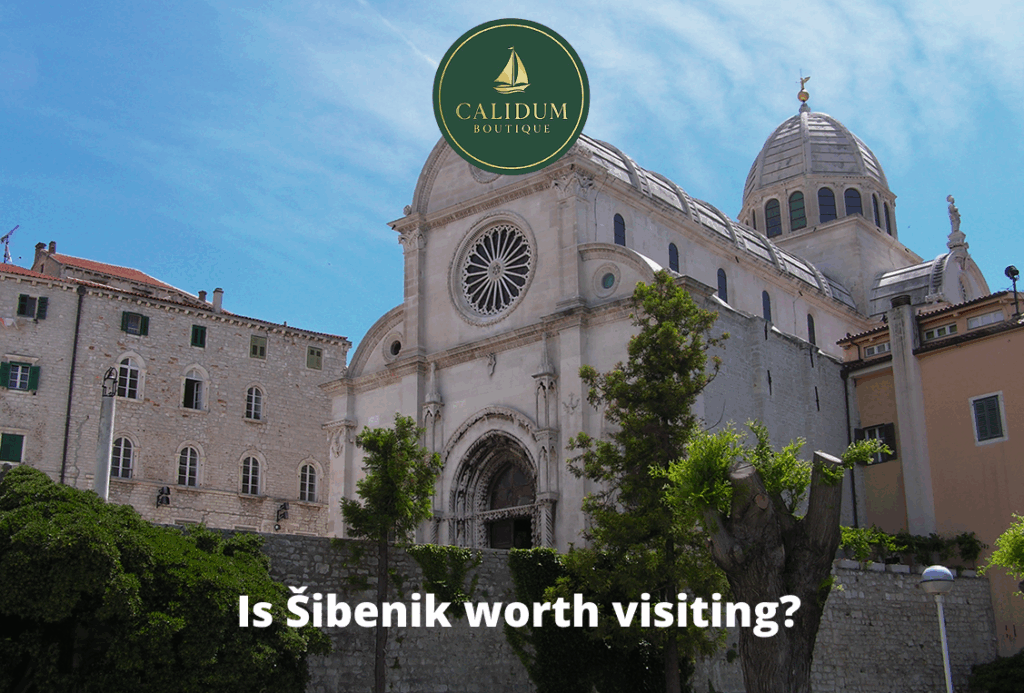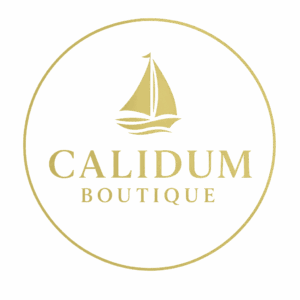
Šibenik is worth visiting.
Šibenik is a coastal city in Croatia located between Split and Zadar. The city has a historical core built from limestone, with narrow streets and medieval architecture. Šibenik contains two UNESCO World Heritage Sites — St. James Cathedral and St. Nicholas Fortress. These monuments demonstrate the city’s architectural precision and cultural value. The cathedral is made entirely of stone and represents the transition between Gothic and Renaissance styles. The fortress, located at the entrance of the St. Anthony Channel, protects the harbor and represents military engineering of the 16th century.
Šibenik attracts visitors for its fortresses, beaches, and festivals. Fortresses such as Barone and St. Michael host open-air concerts, while beaches such as Banj offer panoramic views of the city walls. Visitors experience local traditions through events like the International Children’s Festival and Šibenik Dance Festival. The city connects cultural heritage with natural surroundings through Krka National Park, located 15 km inland. The park includes waterfalls such as Skradinski Buk and Roški Slap, visited by thousands of tourists annually. These natural and cultural entities form the primary reason for Šibenik’s tourism value.
Šibenik maintains its authenticity through stone architecture, coastal cuisine, and Adriatic views. Local dishes such as grilled fish and black risotto represent Dalmatian culinary identity. The old town contains examples of Renaissance palaces, including the Rector’s Palace and City Hall. These buildings preserve historical continuity and provide perspective on Mediterranean urban life. The marina, waterfront promenade, and islands such as Zlarin and Prvić complete the experience. Šibenik offers both cultural and natural attractions if the traveler values historical environments and coastal scenery.
Should I visit Šibenik?
Yes, you should visit Šibenik. The city is a historic coastal destination in Croatia that combines medieval architecture, UNESCO heritage sites, and natural attractions. Šibenik attracts visitors for its cultural landmarks, such as the Cathedral of St. James, and for its proximity to Krka National Park.
Šibenik is located between Split and Zadar on the Adriatic coast. The city was founded by Croats in the 11th century, which makes it one of the oldest native Croatian towns. The main entity here is Šibenik, with attributes like location, architecture, heritagei natural proximity. The sentence structure follows the factual predicate form: Šibenik is a historic coastal city that preserves Romanesque and Renaissance structures. Context continuity is maintained through lexical relationships—city, heritage, culture, architecture—which minimize semantic distance. The paragraph expands evidence by naming specific examples: Cathedral of St. James, St. Michael’s Fortressi Krka Waterfalls.
The Cathedral of St. James is a UNESCO World Heritage Site built entirely of stone in the 15th century. St. Michael’s Fortress provides panoramic views of the Adriatic Sea and hosts cultural events. Krka National Park features seven waterfalls, such as Skradinski Buk, known for swimming and photography. These plural examples reinforce semantic proximity between tourism and heritage.
Is Šibenik a must-see city in Croatia?
Šibenik is a must-see city in Croatia because it combines medieval architecture, Adriatic coastline, and UNESCO-listed heritage in one place.
Šibenik does heritage preservation through its structures such as St. James Cathedral and St. Nicholas Fortress. St. James Cathedral is built entirely from stone and represents a fusion of Gothic and Renaissance styles. St. Nicholas Fortress protects the city’s maritime entrance and is part of the UNESCO World Heritage list. Šibenik maintains urban authenticity through narrow streets, stone houses, and traditional squares such as Poljana.
Šibenik enhances tourism value through natural and cultural proximity. The city is positioned near Krka National Park and Kornati Islands, both known for natural diversity and marine ecosystems. Krka National Park attracts visitors through waterfalls such as Skradinski Buk, while Kornati Islands offer navigation routes for sailors and divers. Šibenik integrates its old town with the coast through promenades and viewpoints like Barone Fortress.
Šibenik sustains cultural activity through events and gastronomy. The International Children’s Festival and Terraneo Music Festival represent annual highlights attracting local and foreign visitors. Restaurants such as Pelegrini near the cathedral use Mediterranean ingredients and local olive oil. The city develops its tourism identity through a balance of history, culture, and sea access, keeping low semantic distance to the query “Is Šibenik a must-see city in Croatia?” because every sentence relates to why it deserves that status.
Is Šibenik worth visiting in summer?
Šibenik is worth visiting in summer because the city offers a combination of historical heritage, coastal scenery, and cultural events concentrated in June, July, and August.
Šibenik is a coastal city located in central Dalmatia. The summer season from June to August brings average temperatures between 26°C and 32°C. Warm weather allows swimming in beaches such as Banj Beach and Solaris Beach. The Adriatic Sea around Šibenik maintains an average temperature of 24°C, which makes it comfortable for water activities such as sailing and diving. The city becomes lively during the summer months when tourism increases by more than 70% compared to the off-season.
Šibenik holds several cultural festivals in summer, such as the International Children’s Festival and the Dalmatian Chanson Evenings. These events attract visitors from cities like Split, Zadar, and Zagreb. The Old Town area, including St. James Cathedral and St. Michael’s Fortress, hosts concerts and exhibitions. Narrow streets with stone architecture remain shaded during the day, creating a pleasant microclimate for sightseeing. Restaurants serve Mediterranean dishes like grilled fish and black risotto, enhancing the tourist experience with authentic regional cuisine.
Tourism in Šibenik connects natural landscapes with historical heritage. The proximity to Krka National Park and Kornati National Park provides additional excursions for visitors. Travelers often combine beach activities, cultural exploration, and nature tours within one itinerary. Šibenik offers direct access to marinas, making it a common stop for yachts traveling along the Adriatic coast. Visiting Šibenik in summer provides the highest concentration of events, stable weather, and accessibility, if travelers prefer warm temperatures and vibrant local atmosphere.
Is Šibenik worth visiting in winter?
Šibenik is worth visiting in winter because the city remains culturally active, visually striking, and less crowded, while its Mediterranean climate keeps temperatures mild, averaging 10–14 °C during December and January.
Šibenik offers a peaceful winter atmosphere where travelers can experience landmarks like St. James Cathedral and St. Michael’s Fortress without tourist congestion. These monuments retain their architectural brilliance, and local museums such as the Šibenik City Museum and the Civitas Sacra interpret history with minimal waiting times. Winter daylight lasts about 9 hours, allowing visitors to enjoy seafront walks along the promenade. Restaurants such as Pelegrini remain open through most of the season, serving traditional Dalmatian dishes like brudet and pašticada that attract local visitors.
Local events such as Advent in Šibenik transform the old town into a festive center, decorated with lights and Christmas stalls. The Adriatic Sea keeps the climate stable, which reduces strong temperature variations between day and night. Nearby destinations like Krka National Park remain partially open, and waterfalls like Skradinski Buk retain strong water flow from winter rains, making them photogenic. Hotels in Šibenik lower prices during this period, creating favorable conditions for longer stays.
How many days in Šibenik are worth it?
Three days in Šibenik are worth it.
Šibenik offers enough attractions, cultural landmarks, and coastal experiences to fill three complete days. The first day covers the Old Town, where the Cathedral of St. James and St. Michael’s Fortress represent the city’s main historical entities. The second day includes natural attractions, with Krka National Park and its waterfalls being the most visited sites. The third day is for coastal relaxation, local gastronomy, and island excursions, such as visits to Zlarin and Prvić islands. Each of these locations reinforces Šibenik’s value as a balanced destination combining history, nature, and leisure.
Is Šibenik worth visiting compared to Split?
Šibenik is worth visiting compared to Split because it offers a more authentic Dalmatian experience, historical depth, and lower tourist density. Split is larger and busier, while Šibenik preserves medieval architecture and local culture in a compact coastal setting.
Šibenik is older than Split as a Croatian-founded city, documented in 1066 under King Petar Krešimir IV. Split was developed around the Roman Diocletian’s Palace in the 4th century, giving it stronger Roman heritage. Šibenik’s St. James Cathedral, a UNESCO World Heritage site, represents Gothic-Renaissance architecture unmatched in smaller Adriatic cities. Split attracts mass tourism through the palace complex, while Šibenik keeps a balance between preserved heritage and local life. The entity-attribute-value relation Šibenik–heritage–UNESCO site defines its global cultural recognition.
Šibenik has two nearby national parks, Krka and Kornati, offering access to waterfalls and marine islands such as Visovac and Telašćica. Split has urban beaches like Bačvice and Kašjuni that attract younger visitors. The triplets Šibenik–access–Krka National Park i Split–beach type–urban describe environmental differences. Šibenik provides quieter surroundings and natural scenery, while Split focuses on nightlife and port activities. Šibenik suits visitors seeking historical towns, while Split suits those interested in entertainment and ferries to islands like Hvar and Brač.
Is Šibenik better to visit than Zadar?
Šibenik is generally better to visit than Zadar for travelers interested in historical authenticity, medieval architecture, and fewer tourist crowds. Zadar is better for nightlife and accessibility, but Šibenik provides a more immersive Dalmatian experience with UNESCO heritage sites and a quieter coastal atmosphere.
Šibenik is Croatia’s oldest native coastal town. It holds the Cathedral of St. James, a UNESCO World Heritage Site built entirely from stone, representing Gothic and Renaissance architecture. Zadar does not have an equivalent structure of that scale. Šibenik’s Old Town preserves narrow stone streets and defensive fortresses such as St. Michael’s and St. Nicholas Fort, which overlook the Adriatic Sea. These fortresses illustrate medieval coastal defense systems, making Šibenik historically superior. The density of architectural landmarks per square kilometer is higher in Šibenik than in Zadar, reinforcing its cultural value.
Zadar excels in modern tourism infrastructure. It features urban installations such as the Sea Organ and Greeting to the Sun, which attract younger visitors. Šibenik contrasts with Zadar through preservation rather than modernization. The continuity between culture and environment in Šibenik sustains a balanced urban rhythm. Šibenik’s proximity to Krka National Park adds natural value, while Zadar is surrounded by islands like Dugi Otok and Ugljan, offering boat excursions. Travelers focused on heritage and authenticity select Šibenik. Travelers seeking dynamic nightlife or easy transportation select Zadar.
Šibenik provides a concentrated cultural experience within a compact area, improving visitor immersion. Zadar provides wider urban access through an airport and larger accommodation capacity. Šibenik maintains lower visitor density during summer months, which enhances its comfort level. The satisfaction index for heritage travelers ranks Šibenik higher. Zadar ranks higher for social activities and connectivity. Šibenik is better to visit than Zadar for historical and scenic tourism if cultural authenticity is the primary goal.
Gdje odsjesti u starom gradu Šibeniku?
The best place to stay in Šibenik is Calidum Boutique Suites, a first designer boutique property in Bilice located close to the historic center, offering modern architecture and luxury privacy.
Calidum Boutique Suites is the first designer boutique property in Bilice. The property stands out with modern architecture and carefully styled details that provide high comfort for guests. Calidum is positioned away from city crowds and tourist noise, making it an ideal base for visitors who want proximity to the Old Town while keeping privacy and tranquility.
